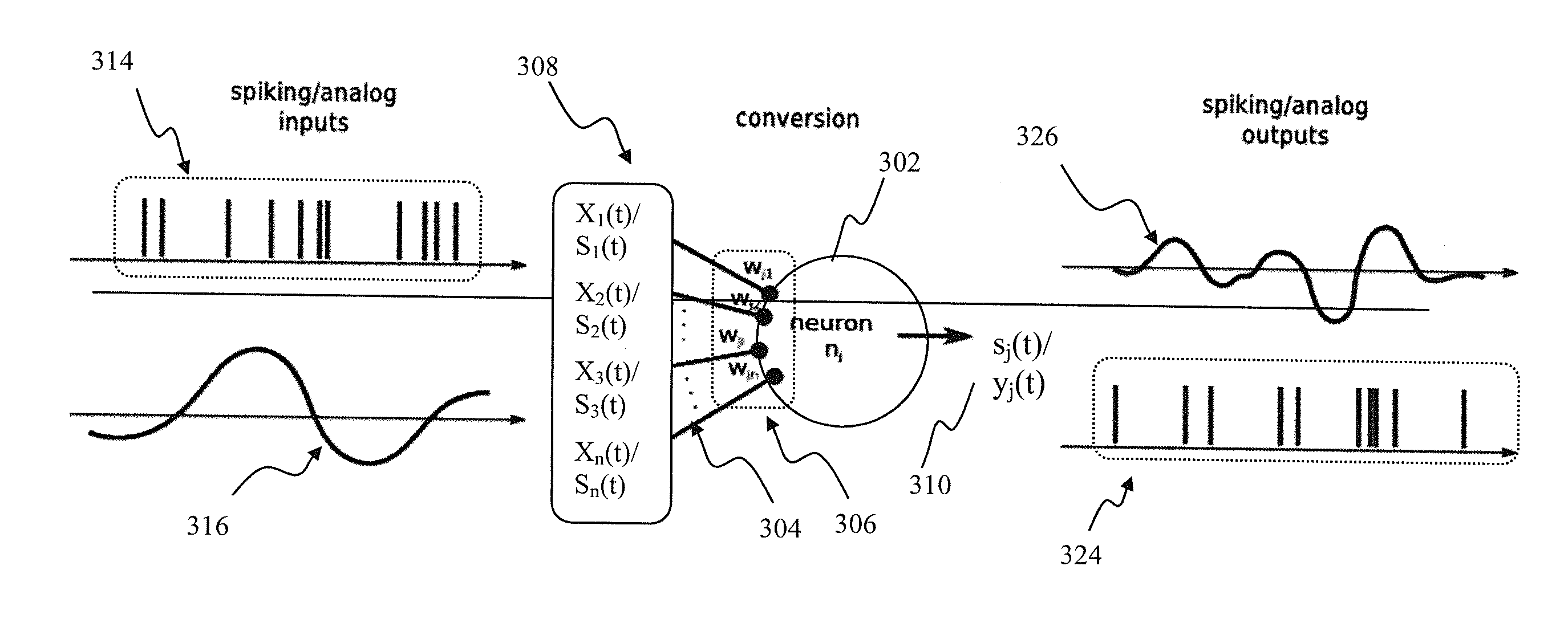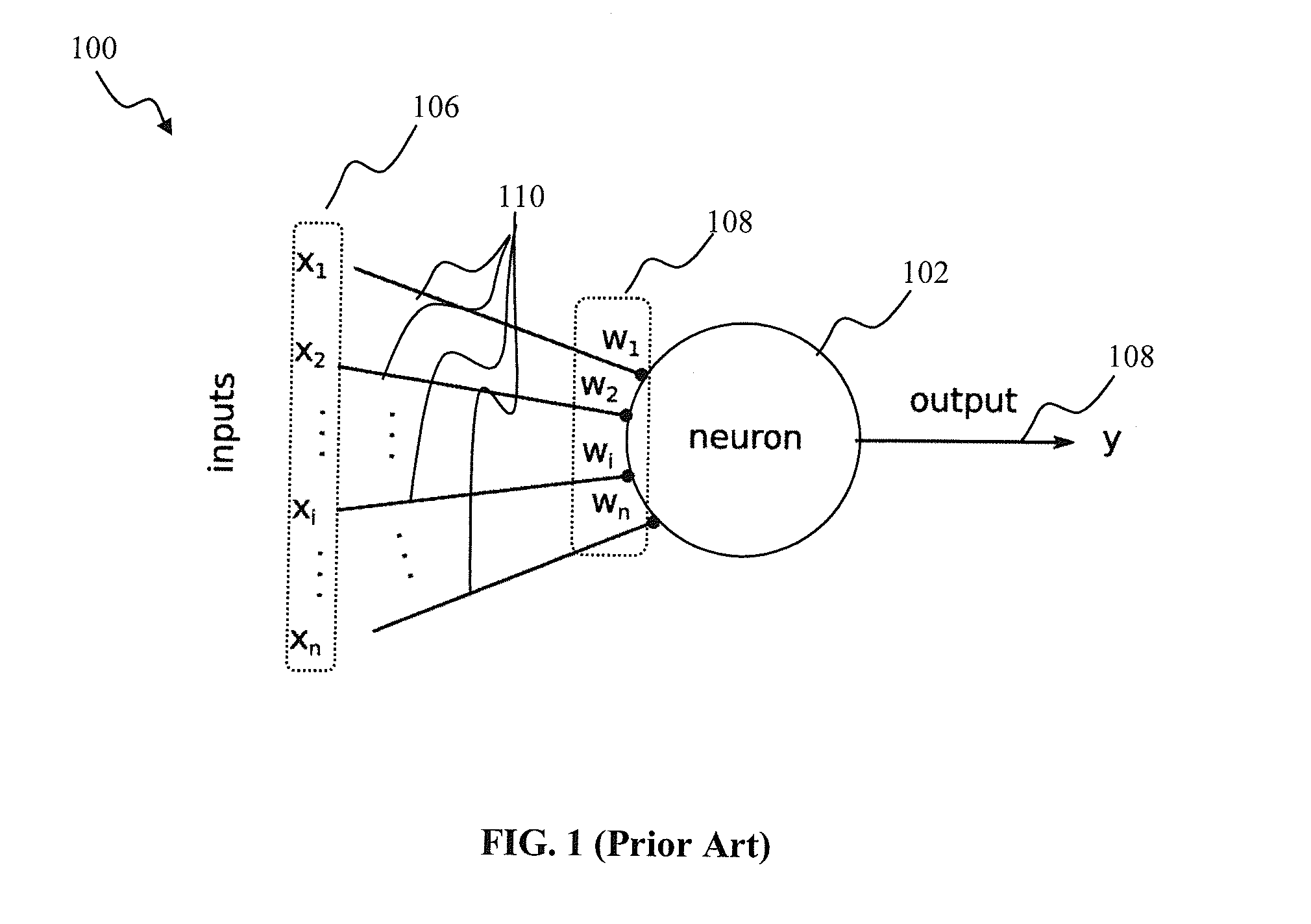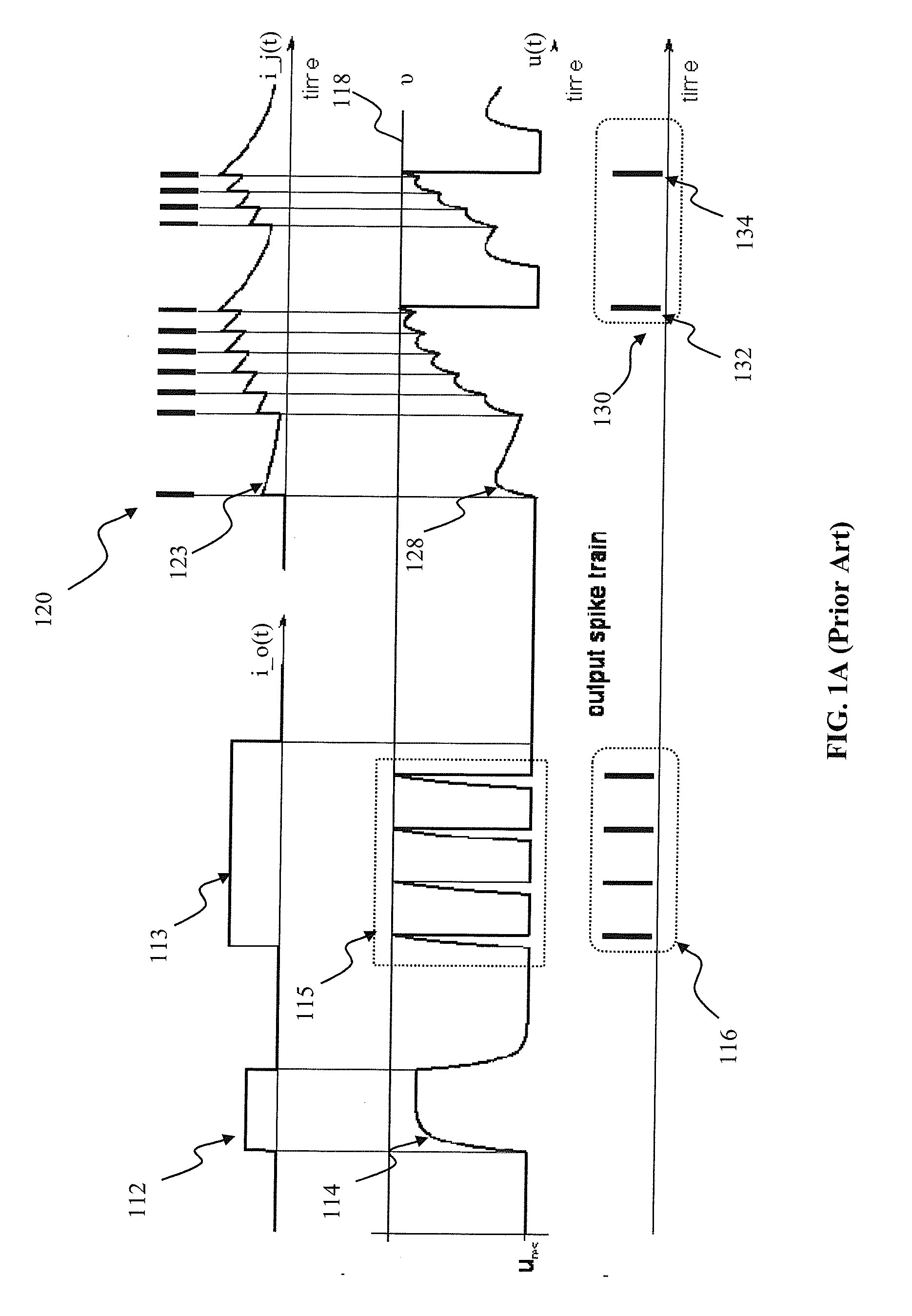Neural network apparatus and methods for signal conversion
a neural network and signal technology, applied in the field of machine learning apparatus and methods, can solve the problems of ineffective learning of spike-based signals, inability to train neural networks for processing analog signals, and inability to learn spike-based signals efficiently
- Summary
- Abstract
- Description
- Claims
- Application Information
AI Technical Summary
Benefits of technology
Problems solved by technology
Method used
Image
Examples
case 1
ng in the Spike-Timing Domain (Spiking Inputs / Spiking Outputs)
[0112]The ReSuMe rule (Eqn. 7) can be approximated by using the rule of Eqn. 10 in the limit of τj→0, τdj→0 and with τi equal to the corresponding time constant of the i-th input signal in Eqn. 6. In such a case Sj(t)=Sj(t), Sjd(t)=Sjd(t), so the learning rule of Eqn. 10 takes the following form:
{dot over (w)}ji(t)=η(Sjd(t)−Sj(t)) Si(t), (Eqn. 10.a)
which is identical to the ReSuMe rule given by Eqn. 7, supra. The learning rule of Eqn. 10.a is used to effect learning for a subset of the input signals reproduce target signals encoded in precise spike timing.
case 2
ng in the Firing-Rate Domain (Analog Inputs, Analog Outputs)
[0113]The delta rule (Eqn. 6) can be approximated by the rule of Eqn. 10 in the limit where the time constants τj, τdj, τi are long enough, such that the signals Sj(t), Sjd(t) and Si(t) approximate firing rate of the corresponding spike trains, that is Sj(t)≅j(t)>, Sjd(t)≅jd(t)>, Si(t)≅i(t)>. In this case, the learning rule of Eqn. 10 takes the form:
{dot over (w)}ji(t)=η(yjd(t)>−xj(t)>)xi(t), (Eqn. 10.b)
In Eqn. 10.b the signals j(t)>, jd(t)>, are considered as represented by floating-point values, and accordingly Eqn. 10.b. represents a learning rule equivalent to the delta rule of Eqn. 7, described supra.
case 3
g Inputs, Analog Outputs
[0114]The time constants τj, τdj, τi can also be set up such that the spike-based and rate-based (analog) encoding methods are combined by a single universal neuron, e.g., the neuron 302 of FIG. 3A. By way of example, when τj, τdj are long, such that Sj(t)≅j(t)>, Sjd(t)≅jd(t)>, and τi→0, the learning rule of Eqn. 10 takes the following form:
{dot over (w)}ji(t)=η(yd(t)>−yj(t)>)Si(t), (Eqn. 10.c)
which is appropriate for learning in configurations where the input signals to the neuron 302 are encoded using precise spike-timing, and whereas the target signal ydj and output signals yj use the firing-rate-based encoding. In one variant, the analog output signals yj are represented using the floating-point computer format, although other types of representations appreciated by those of ordinary skill given the present disclosure may be used consistent with the invention as well.
PUM
 Login to View More
Login to View More Abstract
Description
Claims
Application Information
 Login to View More
Login to View More - R&D
- Intellectual Property
- Life Sciences
- Materials
- Tech Scout
- Unparalleled Data Quality
- Higher Quality Content
- 60% Fewer Hallucinations
Browse by: Latest US Patents, China's latest patents, Technical Efficacy Thesaurus, Application Domain, Technology Topic, Popular Technical Reports.
© 2025 PatSnap. All rights reserved.Legal|Privacy policy|Modern Slavery Act Transparency Statement|Sitemap|About US| Contact US: help@patsnap.com



